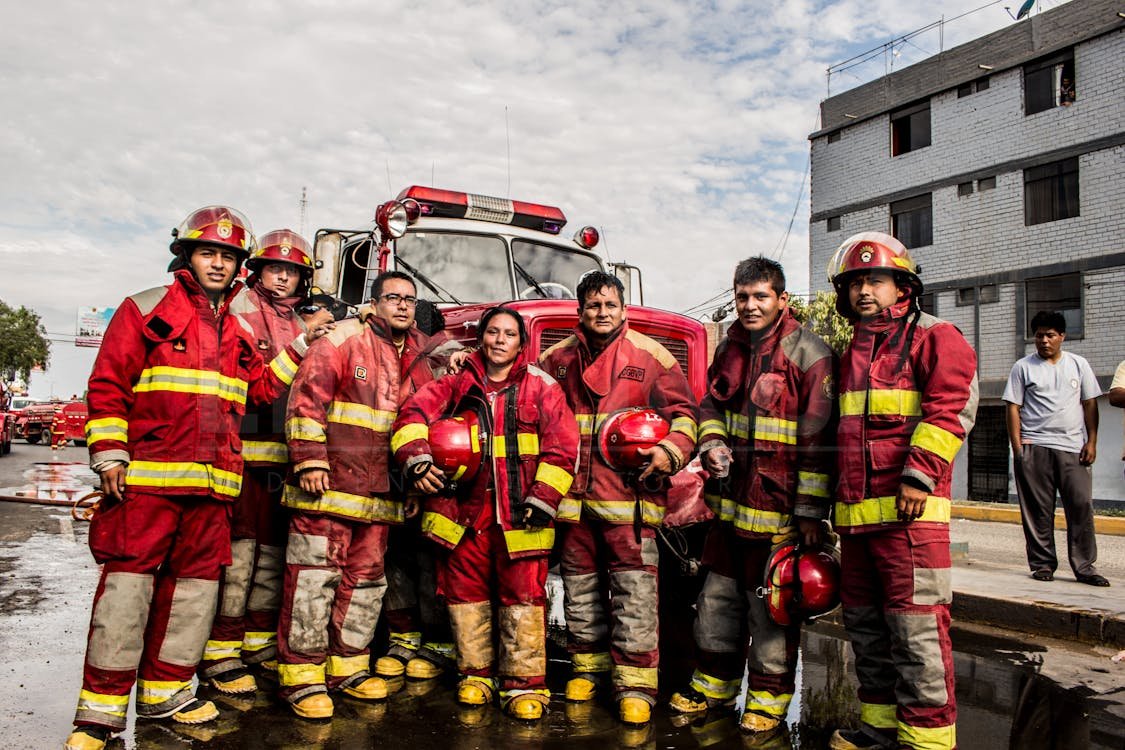Image: https://www.pexels.com/photo/group-of-firefighters-on-street-17664430/
For decades, Aqueous Film Forming Foam (AFFF) has been a firefighter’s shield, blanketing infernos and protecting lives. However, a dark truth lurks beneath the seemingly safe exterior – AFFF is laced with Per- and Polyfluoroalkyl Substances (PFAS), chemicals linked to a multitude of severe health problems.
Now, firefighters and communities burdened by AFFF contamination are banding together to demand change. Let’s read on to learn more.
Scope of Contamination and Ill-Effects
The Environmental Protection Agency (EPA) classifies PFAS as “emerging contaminants” due to their widespread presence in the environment and their potential health risks. A significant victory occurred in April 2024 when they classified two commonly used PFAS chemicals, PFOA and PFOS, as hazardous substances.
This designation, falling under the Superfund Act (CERCLA), strengthens efforts to clean up PFAS contamination plaguing communities. The EPA issued a policy clarifying their enforcement focus on those significantly contributing to releasing PFAS chemicals into the environment. They aim to increase transparency and hold polluters accountable for the PFAS-caused environmental damage.
According to TorHoerman Law, and studies published in the NIH’s Environmental Health Perspectives, PFAS exposure is linked to an increased risk of cancers, including testicular and kidney cancer. It may also cause thyroid disease, ulcerative colitis, and immune system deficiencies. Firefighters exposed to AFFF were found to have elevated blood levels of PFAS and a higher risk of certain cancers compared to the general population.
The specter of AFFF contamination extends beyond firefighters. Reports by the Environmental Working Group (EWG) revealed that PFAS contamination from firefighting training grounds and military bases has polluted drinking water sources for millions of Americans.
The EWG estimates over 6 million people in the US have public drinking water exceeding their recommended health advisory level for PFAS, and that the authorities have known for decades.
Oscoda, Michigan, sits beside a lake marred by foamy remnants of firefighting foam used at a nearby Air Force Base. This foam has PFAS that has contaminated the environment.
Wurstmith Air Force Base, now closed, became ground zero for the US military’s PFAS crisis. The Pentagon estimates over 700 military communities face similar issues, with PFAS detected in drinking water supplies nationwide.
Community advocates have pressured the Pentagon for action. While a clean-up plan in Oscoda remains elusive, the Pentagon has taken steps like phasing out PFAS-laden foam and developing safer alternatives. Despite these efforts, residents in Oscoda remain cautious after years of unfulfilled promises. The fight in Oscoda, and across the nation, continues.
The Firefighting Community
This grim reality has ignited a firestorm of community advocacy. Firefighters and residents are no longer content with the status quo, with many opting to file a firefighter foam lawsuit.
They are demanding legislative action, pushing for stricter regulations on AFFF use, and seeking accountability from manufacturers. Grassroots movements are lobbying for federal legislation to phase out AFFF and invest in safer alternatives.
Across the nation, communities are mobilizing. In Maine, residents near a former Air Force base filed a class-action lawsuit against PFAS manufacturers for contaminating their drinking water.
In a lawsuit filed by residents of Stella, Minnesota, local firms are accused of contaminating private wells with PFAS. The lawsuit alleges that waste spread on nearby farmland is the source of the contamination. Residents claim test results show PFAS levels in their wells ranging from 1,660-2,910 parts per trillion, exceeding the safety standard by 20-40 times and way higher than proposed EPA limits.
Similarly, a community in upstate New York successfully pressured their local fire department to transition away from AFFF. These local victories demonstrate the power of community activism in driving change.
The fight for AFFF reform requires more; firefighters and communities can:
- Lobby for Legislative Action: Urge local, state, and federal representatives to introduce and support bills that regulate or ban AFFF use, prioritize safer alternatives, and hold manufacturers accountable.
- Fuel Grassroots Movements: Organize community meetings, raise awareness through social media campaigns, and participate in protests to amplify the voices of those impacted by AFFF exposure.
- Gather Public Support: Organize petition drives to demonstrate public concern and present them to lawmakers to showcase the widespread demand for reform.
- Educate and Empower: Organize educational workshops to educate the public about the health risks of AFFF and the importance of reform.
- Work with Environmental Groups: Partner with environmental organizations to leverage their expertise and networks to amplify the message and achieve legislative goals.
Australian firefighter Mick Tisbury wasn’t just battling blazes for 12 years, he was fighting to expose and address a hidden danger. After discovering PFAS contamination at a firefighter training facility, Tisbury didn’t back down.
He lobbied for safer practices despite facing resistance, and his efforts eventually led to a parliamentary inquiry, blood test studies, and policy changes. Tisbury’s relentless pursuit of PFAS awareness and solutions has made him a true champion for firefighter and community safety.
FAQs
How can firefighters minimize PFAS exposure during firefighting activities?
While entirely eliminating PFAS exposure is challenging, firefighters can take steps to minimize risk. These include wearing turnout gear properly during calls, showering thoroughly after firefighting activities to remove contaminants from skin and hair, and advocating for fire departments to adopt PFAS-free firefighting foams whenever possible.
What are some safer firefighting foam alternatives being used or developed?
Fluorine-free foams (F3s) and compressed air foam systems (CAFS) are emerging as new and effective replacements for PFAS-containing foams. These alternatives demonstrate promising firefighting capabilities while eliminating the use and potential risks associated with harmful PFAS chemicals.
Beyond firefighting foams, where else might people encounter PFAS contamination?
Beyond firefighting foams, PFAS contamination lurks in surprising places. Everyday items like non-stick cookware, water repellents for clothing, and stain guards for furniture may contain these chemicals. Public drinking water sources can become contaminated if located near PFAS manufacturing facilities or waste disposal sites.
By uniting firefighters, residents, and environmental groups, a formidable force for change can be created. This united front can push for stricter regulations, and safer firefighting alternatives, and hold manufacturers accountable for the legacy of AFFF contamination. Through proactive advocacy, scientific research, and community action, a future where both firefighters and communities are safe from the dangers of AFFF can be achieved.











Leave a Reply